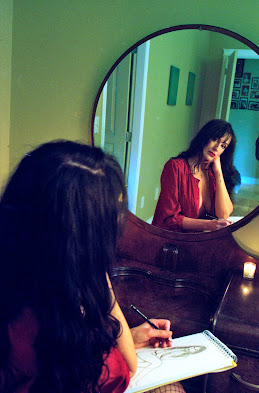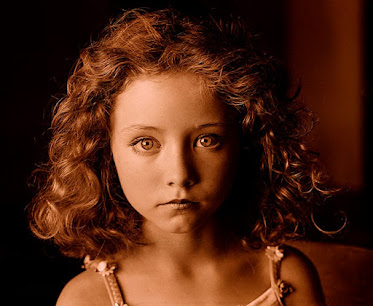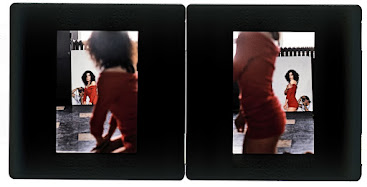 |
| Sandrine Cassini |
Ese curioso color del colorado
Being bilingual has its problems. When I think about
anything I must somehow compare and contrast that thought in two languages. It
gets more complicated when I think in English (in Argentine, Texan and Canadian
versions). In Spanish my thoughts are between the Argentine and Mexican
version. My Mexican-born Hilary needs to see Argentine films with subtitles.
I have written before how words in one language may not exist in another. That is the case of oblivion. Astor Piazzolla knew that in Spanish oblivion translated to olvido (to forget) so he has his lovely composition, Oblivion, its title in English. Oblivion has a close synonym, nothingness. The Spanish nada is not that in the least.
But the opposite can exist in words in Spanish that do not
translate well into English. My
favourite translation conflict is in Jorge Luis Borges’s poem La lluvia – el curioso color del colorado.
That does not translate well. In English you have red and
crimson, in Spanish we have rojo, colorado and carmesí. In my Argentina, racism sometimes feels subtle. My upper class family (this has been an almost century-long Argentine custom that they will never use the word rojo (red) saying that the lower classes use rojo. They opt for colorado. If anybody in my family sneezes, politeness dictates you say nothing. For a while in the 60s I remember that if you visited the elite you never asked, "Where is the bathroom?" but,"Where can I piss?"
Below the poem La lluvia in Spanish and in English
La Lluvia - Jorge Luís Borges
Bruscamente la tarde se ha aclarado
porque ya cae la lluvia minuciosa.
Cae o cayó. La lluvia es una cosa
que sin duda sucede en el pasado.
Quien la oye caer ha recobrado
el tiempo en que la suerte venturosa
le reveló una flor llamada rosa
y el curioso color del colorado.
Esta lluvia que ciega los cristales
alegrará en perdidos arrabales
las negras uvas de una parra en cierto
patio que ya no existe. La mojada
tarde me trae la voz, la voz deseada,
de mi padre que vuelve y que no ha muerto.
 |
| Rosa 'Darcey Bussell' - 11 August 2023 |
The Rain : J. L. Borges
The afternoon grows light because at last
Abruptly a minutely shredded rain
Is falling, or it fell. For once again
Rain is something happening in the past.
Whoever hears it fall has brought to mind
Time when by a sudden lucky chance
A flower called “rose” was open to his glance
And the curious color of the colored kind.
This rain that blinds the windows with its mists
Will gladden in suburbs no more to be found
The black grapes on a vine there overhead
In a certain patio that no longer exists.
And the drenched afternoon brings back the sound
How longed for, of my father's voice, not dead.
The curious colour that is red does not have that lovely ring of the Borges poem. It is about a red rose.
Thinking about that lovely line I have decided to write this blog and make it all about the colour red. In one day I was able to find at least 100 of my photographs that featured the colour.
There is another reason why red is always in my mind. In
1952 when we were living in Buenos Aires, my grandmother, was not happy with the presidency
of Juan Domingo Perón. She dispatched my mother to Mexico City (her sister
Dolly lived there) to see if we could move there. My mother said it was a good place. She returned with a beautiful Mexican wool rebozo given to her by my Aunt
Dolly. The rebozo (shawl) was died using a colour extracted with the pressing
of sow bugs called cochineal that live in particular Mexican cactus. A few
years later the practice of using that colour, first used by Titian, changed to
the use of a synthetic colour. In the 16th,17th and 18th centuries
Spanish galleons were often captured by the French, Dutch and the English, not only
for their gold or silver, but for that red cochineal. The rebozo is featured in many of the photographs below.
Some years ago I started a project (I quit not knowing I should have had Rosemary pose) of taking photographs of my friends and family wearing that rebozo and told to write something about the experience. Some of those photographs will be recognizable in the photographs in this blog and the link below.
Some of my Red Rebozo subjects















































































































